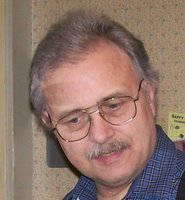I am trying Mozilla FireFox So far, It's a possible winner (Update: It isn't winning. See comments.)
I have always been reluctant to relinquish the default browser to Mr. Gates, but it was increasingly a hassle to deal with the variations, especially after Netscape joined the AOL Time Warner gang, it made no sense to stand up to Microsoft to be loyal to AOL(?) That was not logical, Mr. Spock.
My very first graphical browser was Mosaic, that fit on one floppy. (eventually became IE) You had to manually build a text file associating viewers and utilities and bind it to the browser for it to work. I became a Netscape user along the way, trying anything that moved and was free, for dialup too. I have tried each variation of Mozilla, really like Opera, and some splinter things on the side, but eventually, like 97% of the market, avoided problems by using Internet Explorer.
But the problems were just hiding. Microsoft tries to seem in control by forcing sometimes daily "security upgrades" on us if you let them auto update. The mess was full of "back door leaks and vulnerabilities" And despite having the best antivirus protection and spywatch, ad-aware, pop-up blockers, a knowledge of how to set up a firewall and private IP, all that crap, I was still being bombarded with junk from the web. Just dealing with the software to block it makes me mad. I felt violated like the time some kid ripped down our Christmas lilies, and we couldn't find out who did it.
I know it is not really all Microsoft's fault. They are the target because of their ubiquitous operating system-browser combo. If another browser was out there and vulnerable, the hackers and the unscrupulous ad forces would fine tune it for them. To some extent MS has brought it on themselves because of their tight reliance on the OS, and disregard for the user. For instance, they still have mean spirited error message copy popping up blaming the user for errors that more likely are system or software glitches. A monopoly, however valid, does not have to please the customer, as they would if they had some competition.
Well, the last straw was my laptop, which has win 2000, was taken over by a nasty that they call a home page hijack. Every time you start IE it runs a script that changes some hidden files and makes scores of new entries in the registry changing the home page to a full page of ads and links to e-commerce sites. Of course there is no return address or company claiming responsibility for this, who you can contact to complain, it is all carefully anonymous. I immediately wonder how this could be profitable for them Who would go to these links and buy anything from someone who has rudely and probably illegally hijacked their system?
I was able to reverse engineer this thing and block it, however, each time IE starts, it still tries to take over, even though it fails. Why go through that hassle? Pop in Opera, no problemo Pedro!
Even though I liked Opera as a solution, many sites still appeared wrong in formatting, especially ones with Dynamic HTML, it even screwed up my own page, and not in a subtle way.
So far, Mozilla Firebox has been great. On install, it sucked in all the bookmarks, and even set up most of the plug-ins automatically. I'm sure I will find weaknesses, but so far,every difference I see is a benefit, it is the alternative that doesn't have the holes in it that MS does, and it seems to be fine otherwise.












 ___
___




















